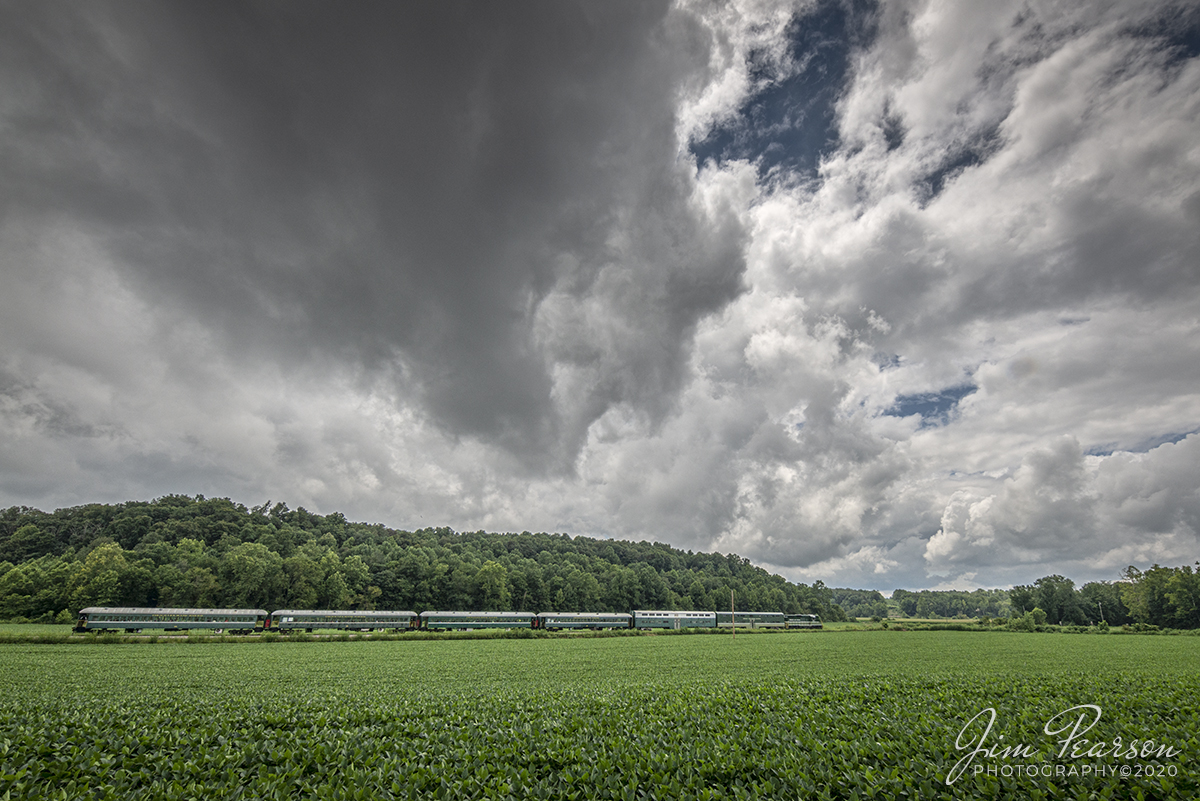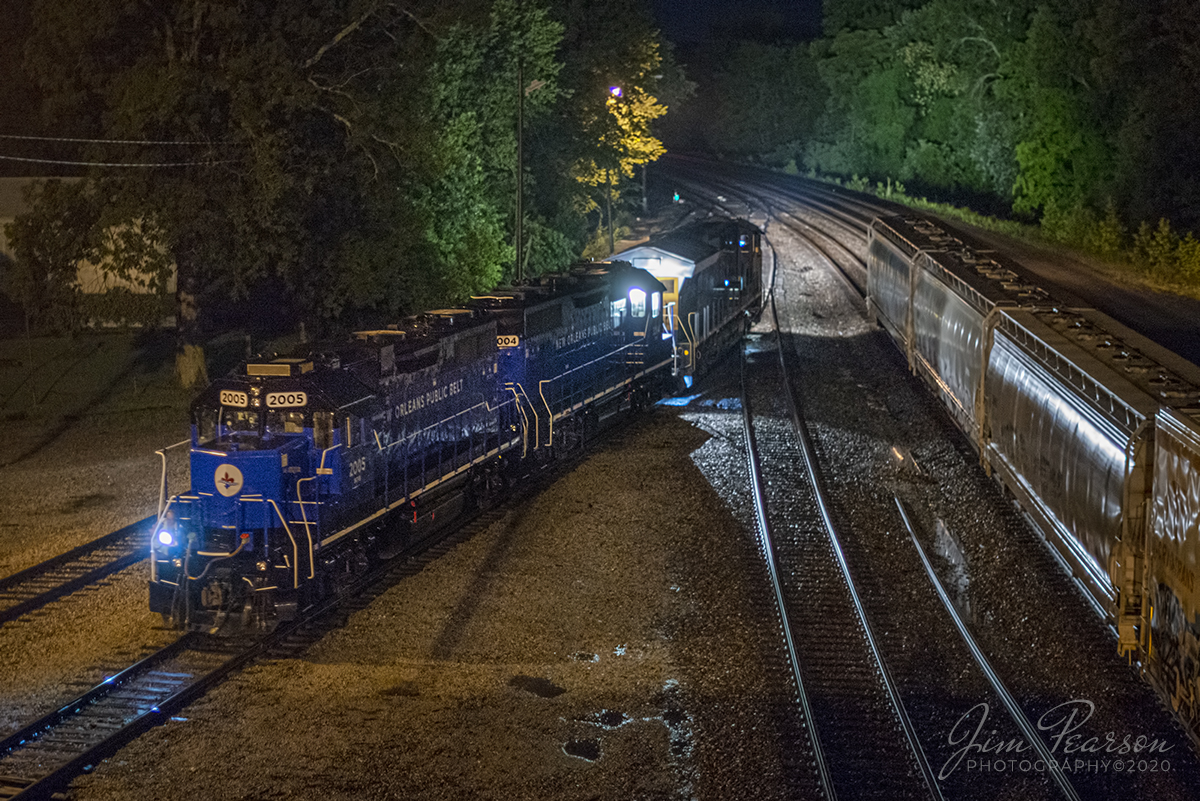August 1, 2020 – Engine 465 leads the afternoon passenger train as it approaches the Gradman Station on the French Lick Scenic Railway under stormy skies. Despite the COVID19 restrictions the train had a good number of passengers on the train, all wearing masks and separated according the CDC guidelines.
According to their website: The Indiana Railway Museum is a tourist railway located in French Lick, Indiana. The Museum was founded in 1961 in the town of Westport, Indiana where the railroad operated a tourist excursion, utilizing one small locomotive, three passenger cars, and about twenty volunteers. Ridership was estimated at about 500 passengers in 1962. The museum and railway remained in Westport until a move was necessitated in 1971. The organization relocated to Greensburg, Indiana where it operated until 1976 when it again, it changed locations. The Museum was relocated to French Lick in 1978 after an agreement with the Southern Railway Company. They deeded the Museum a total of sixteen miles of track stretching from West Baden, Indiana, approximately one mile north of French Lick, to a small village named Dubois, to the south.
The Indiana Railway Museum currently operates as The French Lick Scenic Railway operating passenger trains over twenty-five miles of this track from French Lick to Jasper.
Tech Info: Full Frame Nikon D800, RAW, Irex 11mm, f/11, 1/500, ISO 220.


